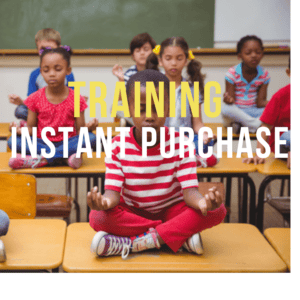Energy awareness to help with SEN
In our work over the last 20 years, we have witnessed a change in approach and attitude towards meditation for children and teens. Having energy awareness in meditation to help with SEN, brings many benefits. This is an essential element for teaching meditation successfully and is important for all young people including children with Autism, or ADHD.
Energy awareness can be a game changer for professionals working with children and/or a person who wants to teach meditation effectively. It brings a level of understanding and attunement that helps harness the subtle nature of meditation for children and brings a powerful, intuitive connection to the experience.
Fostering a deep awareness
It’s important to empowering children with tools for self-regulation, focus, and emotional resilience. Through our teaching program we have realised that isn’t just about teaching techniques; it’s about fostering a deep awareness of the energetic dynamics at play within and around us during the personal journey of learning meditation.
The meditation and medical community are dedicated to establishing the logic and reasoning behind the benefits of meditation for young people. However the subtle awareness of energy brings a deeper connection and ulitmately more benefits:
- Sensitivity to Individual Needs: Children with SEN often have heightened sensitivities to their environment, including energetic stimuli. By cultivating energy awareness, we can attune ourselves to their unique needs, creating a safe and supportive space for their practice. Whether it’s adjusting the pace, tone, or sensory inputs, this heightened sensitivity allows us to tailor our approach to suit each child, fostering a sense of inclusivity and empowerment.
- Facilitating Emotional Regulation: Emotions are energy in motion, and for children with SEN, navigating this energetic terrain can be particularly challenging. Energy awareness equips us with the ability to recognise and respond to the subtle shifts in a child’s emotional state, guiding them towards greater self-awareness and regulation. Through practices such as grounding techniques, breathwork, and visualisation, we can help children channel their energy in constructive ways, fostering emotional resilience and inner calm.
- Creating Harmonious Group Dynamics: Teaching meditation to children often involves working in group settings, where the collective energy of the space significantly influences the learning experience. By cultivating energy awareness within ourselves and guiding children to do the same, we can create an environment where harmony and coherence prevail. Techniques such as mindful listening, empathetic communication, and group energy-balancing exercises help foster a sense of unity and mutual support, enriching the collective journey of self-discovery and growth.
Try these 3 tips to enhance energy awareness
- Personal Practice: Cultivate your own energy awareness through daily mindfulness practices. Tune into the subtle sensations within your body using the senses and step beyond this to observe how your energy interacts with your environment (people and places) – pay particular notice to when you are feeling ungrounded.
- Observation: Observe the energetic dynamics present in your teaching space and the children you work with. Notice any shifts in energy and how they impact the learning environment. Pay attention to colour, shape, clutter and your own emotional state as you enter the space.
- Intention Setting: Set clear intentions for your sessions, focusing on creating a harmonious and supportive atmosphere. Infuse your teaching with integrity and gratitude and if that isn’t possible, notice the response in children when you don’t feel the energy of gratitude or integrity.
Why does energy awareness matter?
Energy awareness is not just a concept; it’s a transformative practice. It holds the power to deepen our connection with self awareness and the children we support. By nurturing this awareness, we can create an empowering learning environment for children.
In our Connected Kids courses, we lead people on a journey that brings benefits to both the teacher and the young person learning meditation.
“several scholars in the West have attempted to link the chakras with anatomical locations in the physical body. For example, the chakras have been theorized to align with several major nerve plexuses and endocrine glands.”
YogaU Online, January 2020
“These studies, though few in number, suggest that the chakras may be scientifically delineated, similar to acupuncture points and meridians which have unique electrical properties (Ahn et al., 2008) and possible anatomical correlates (Bai et al., 2011). “
Is there scientific evidence for chakras?
Become a Certified Meditation Teacher
If you are interested in knowing more about our work, the Connected Kids Professional Course offers you a pathway to accre dited learning. This certificated program offers you professional tools, energy awareness and strategies to train you as an excellent meditation teacher for children.
dited learning. This certificated program offers you professional tools, energy awareness and strategies to train you as an excellent meditation teacher for children.
Working with children affected by trauma?
If you currently work with children experiencing trauma, we offer our Mindful Trauma-sensitive Energy Awareness course.  This combines trauma knowledge from Western science with Eastern philosphies about energy in the context of trauma.
This combines trauma knowledge from Western science with Eastern philosphies about energy in the context of trauma.
Mindful Trauma-sensitive Masterclass



